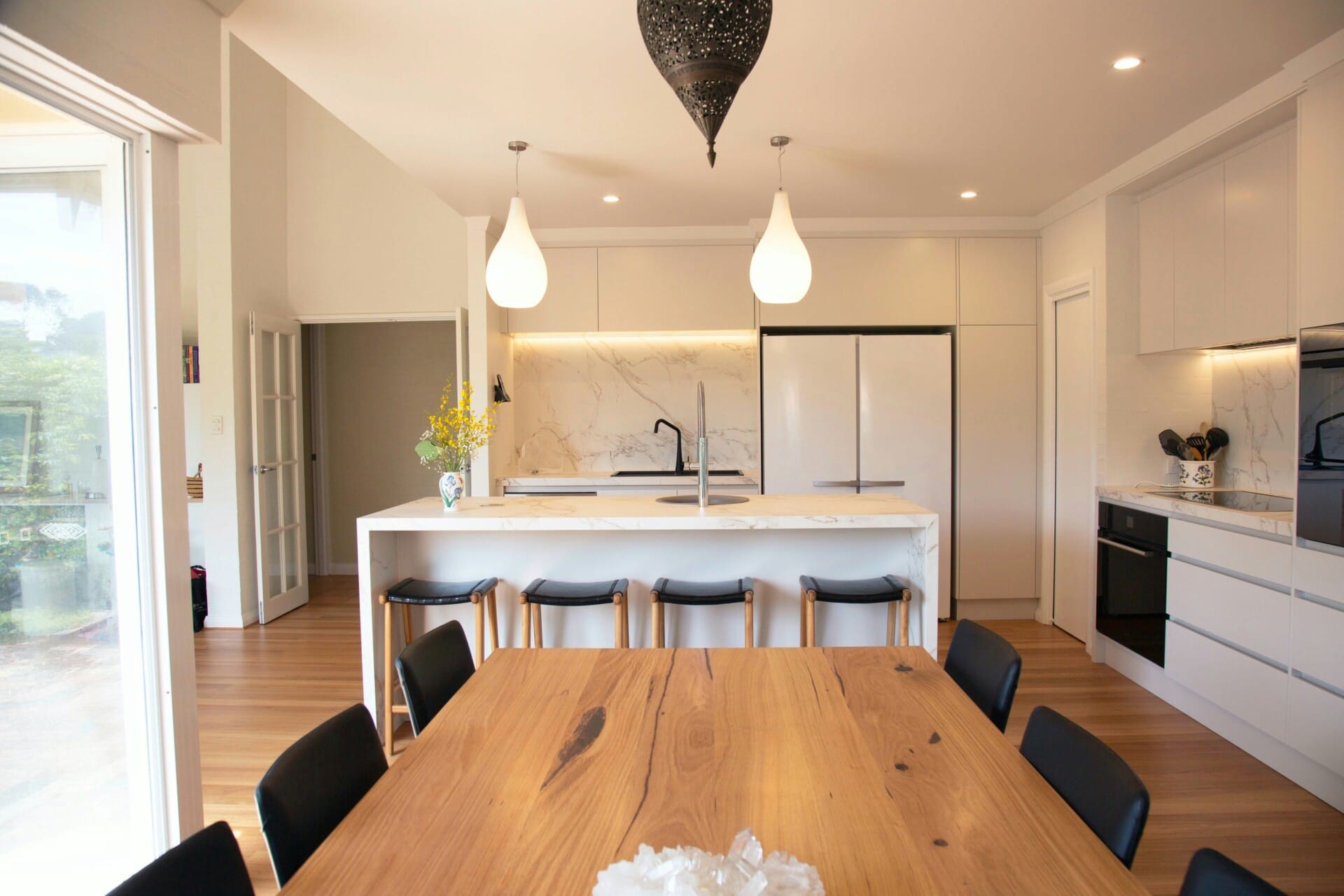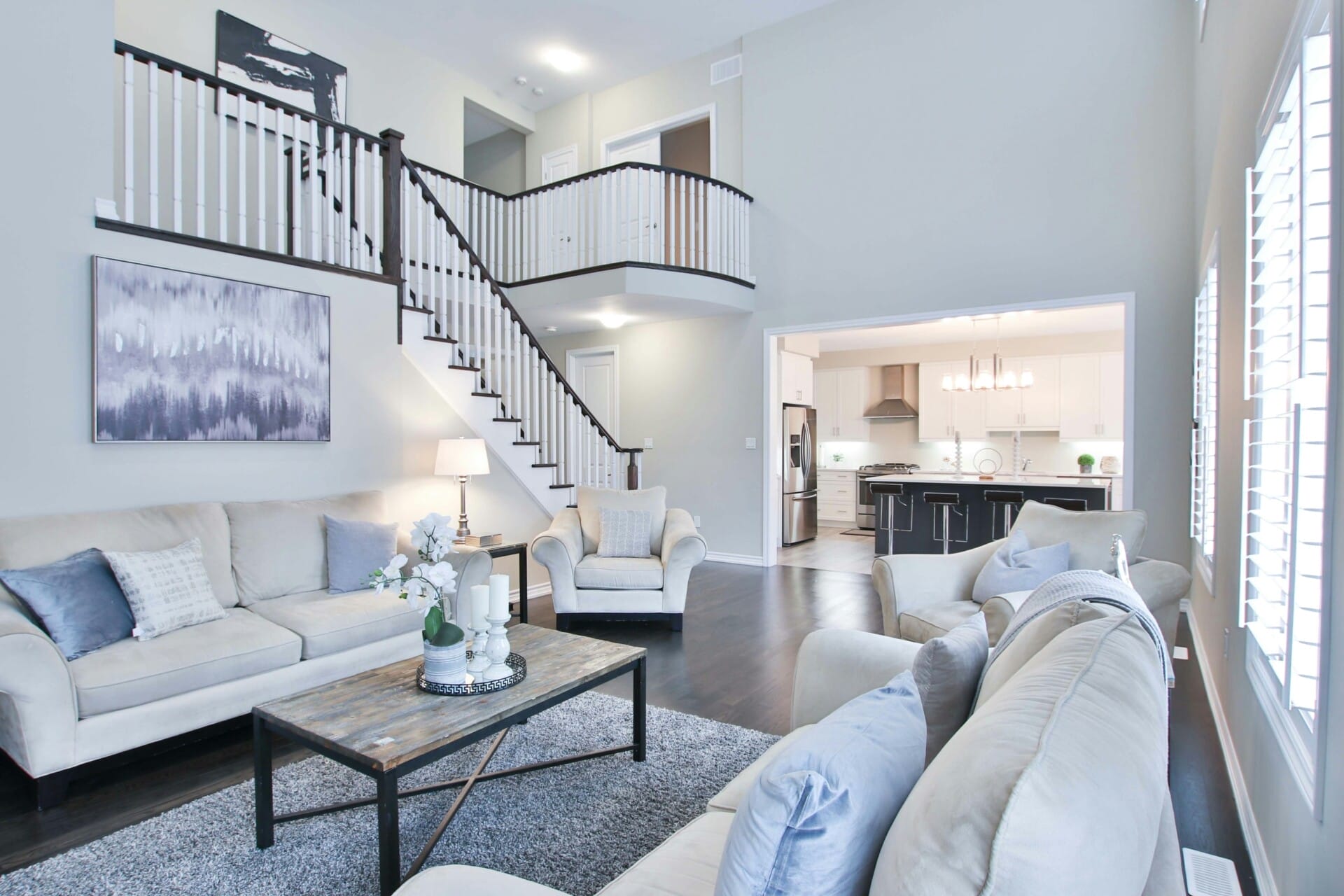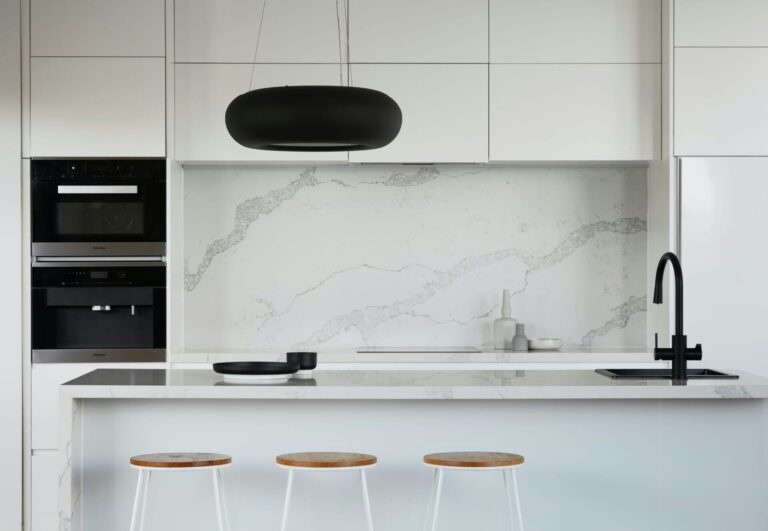When it comes to building your dream home, it’s easy to get caught up in the excitement of floor plans and paint colors. But here’s the thing: even the most detailed designs can go off track without a little hands-on attention. That’s where regular site visits come in! Imagine this as your golden ticket to making sure every brick is laid just the way you envisioned it—because let’s face it, no one wants to settle for “close enough” when they’re investing in a space that’s supposed to reflect their personality and lifestyle. In this article, we’ll chat about why hopping over to the site regularly is not just a good idea, but a crucial part of the home-building process in Malaysia. So, whether you’re keen to catch those little details or simply want peace of mind, let’s dive into why being present could be the secret ingredient to getting your home just right.
Understanding the Importance of Site Visits in Home Construction
When you’re building a home, it’s easy to get swept away by blueprints, color palettes, and the latest trends in bathroom fixtures. However, regular site visits allow you to move beyond images and plans. You get a real-world view of how those plans are unfolding. This firsthand experience can unveil potential discrepancies and problems before they escalate, helping to ensure everything aligns with your vision. Checking in on the progress keeps you in the loop and gives you peace of mind knowing that your hard-earned money is being invested wisely.
Moreover, consistency in site visits can foster better communication with your builders and contractors. Showing up on-site not only makes your presence felt but also emphasizes your commitment to the project. You’re likely to get quick responses to any concerns you raise and understand the day-to-day operations more comprehensively. Building a rapport can lead to an environment where everyone works collaboratively towards a common goal: your dream home. Here are a few key benefits:
- Direct oversight: You can physically assess materials and workmanship.
- Immediate feedback: Address issues as they arise rather than after the fact.
- Stronger relationships: Establish trust and rapport with your construction team.
Consider setting up a schedule for your site visits; they don’t have to be daily but should be frequent enough to catch any issues early. You might even want to create a checklist for each visit. Keeping track of your observations can help organize your thoughts and provide you with clear points to discuss with your contractor. Here’s a simple table you might use to ensure you cover all necessary aspects during each visit:
| Visit Date | Focus Areas | Notes |
|---|---|---|
| Day 1 | Foundation & Structure | Check for any misalignments. |
| Week 2 | Plumbing & Electrical | Verify placement and quality of installed systems. |
| Week 4 | Finishes & Fixtures | Ensure items match your selections. |

Key Elements to Monitor During Each Visit
When visiting the construction site, it’s essential to keep an eye on the quality of materials being used. This is especially important when it comes to the foundation, structure, and finishes. Check that the materials conform to the specifications laid out in your contract. Look out for:
- Material certifications – Ensure all materials meet local standards.
- Condition of materials - Inspect for any signs of damage or subpar quality.
- Consistency – Guarantee that the materials match what was promised in your design options.
Pay close attention to the workmanship during each visit. Skilled labor is crucial for the longevity and aesthetic of your home. It’s a wise practice to observe the following:
- Attention to detail – Look for even seams, straight lines, and correct installations.
- Safety compliance – Ensure that the workers are following safety protocols.
- Adherence to schedule – Assess if the work is progressing as per the timeline agreed upon.
Lastly, maintain an open line of communication with both your builder and project manager. This is vital for resolving any issues or queries that may arise. Keep the following points in mind:
- Regular updates – Ask for progress reports and suggestions for improvements.
- Documentation – Request written confirmations for any changes to the original plans.
- Feedback provision – Express your thoughts regarding the ongoing work and necessary adjustments clearly.

Effective Communication with Your Builder
When building your dream home, connecting with your builder is key to bringing your vision to life. Regular communication helps you share your thoughts and preferences, ensuring each detail aligns with what you’ve envisioned. A productive conversation with your builder can clarify doubts, provide insights, and foster a collaborative approach to make your home unique. It’s essential to voice your questions and concerns as they arise; after all, you know your style best.
Consider keeping an open channel for dialogue with your builder. Scheduling weekly catch-up calls can help keep everyone on the same page. Here are some effective methods to enhance your communication:
- Use Visuals: Share images or mood boards that capture your style.
- Stay Organized: Create a shared document listing features and timelines.
- Be Respectful: Appreciate their expertise while asserting your preferences.
Moreover, make it a habit to document and follow up on crucial discussions to avoid any misunderstandings down the road. A table with key points from these dialogues can serve as a quick reference:
| Meeting Date | Topics Discussed | Action Items |
|---|---|---|
| 01/05/2025 | Design Preferences | Review additional designs |
| 08/05/2025 | Timeline Updates | Confirm material deliveries |
By establishing consistent communication with your builder, you not only enhance the building process but also make it more enjoyable. Being proactive in addressing any confusion or adjustments needed helps to ensure your home is built exactly to your liking. Remember, your input matters in this collaborative journey!

Identifying Potential Issues Early in the Construction Process
When embarking on the journey of building your dream home, spotting potential issues before they escalate can save you time, money, and stress. Regular site visits allow homeowners to observe the progress firsthand and spot discrepancies from the agreed plans. Some of the common issues you might identify during these visits include:
- Misalignment of Structures: Walls or foundations that don’t meet specifications can pose significant problems down the line.
- Quality of Materials: Ensuring that the materials used match your expectations and specifications is crucial for durability and aesthetics.
- Unapproved Changes: Sometimes contractors may suggest alterations that deviate from your initial agreement, and catching this early can prevent dissatisfaction later.
Another key benefit of site visits is that they foster better communication between you and the construction team. By establishing a solid rapport, you create an environment where concerns can be addressed openly. Keeping a checklist during your visits can help streamline this process. Here’s a simple table to illustrate what to keep an eye on:
| What to Check | Notes |
|---|---|
| Structural Integrity | Check for cracks or misalignment. |
| Materials Used | Verify quality and specification compliance. |
| Safety Standards | Ensure the site meets safety regulations. |
your presence on site not only helps in identifying issues but also serves as a motivational factor for the construction team. They know you’re actively involved, which can encourage better performance and attention to detail. It’s all about being proactive rather than reactive, making regular visits a vital part of ensuring that your home is constructed to your specifications.

The Role of Site Visits in Quality Assurance
When it comes to building your dream home, keeping tabs on the construction site is essential. Regular site visits allow homeowners to directly observe the progress of their project and verify that everything aligns with the specifications and designs laid out. It’s the perfect opportunity to catch any discrepancies early on, ensuring that your visions are accurately translated into reality. Being hands-on creates a better understanding of the building process, empowering you to make informed decisions if adjustments are needed.
During these visits, one can identify potential issues such as material quality, workmanship standards, and site safety practices. Asking the right questions can significantly contribute to a smoother construction process. Consider creating a checklist before you go, so you can systematically review important aspects, such as:
- Inspecting Current Workmanship
- Reviewing Safety Measures in Place
- Checking Material Quality on Site
- Ensuring All Plans are Followed
Moreover, maintaining open communication with your builder is crucial. Site visits foster a stronger relationship, enabling you to voice concerns and suggestions. Why not produce a simple tracking table to keep everything organized? This helps you monitor progress and issues effectively:
| Visit Date | Items Reviewed | Notes |
|---|---|---|
| March 1, 2025 | Foundation, Safety | All good, no issues found. |
| March 15, 2025 | Framing, Material | Frame looks great, check wood quality. |
| March 30, 2025 | Roofing, Plumbing | Roof almost complete, plumbing issues raised. |

Staying Aligned with Your Design Goals
Keeping your design goals in check during the building process is key to achieving the home of your dreams. Regular site visits allow you to assess how well the project aligns with your vision. It’s not just about the physical structure; it’s about the atmosphere, color schemes, and overall aesthetic that you’ve meticulously planned. By staying actively involved, you can spot any discrepancies early on and address them before they become bigger issues.
During your visits, consider creating a handy checklist to guide your observations. Here are some important points to keep in mind:
- Material Quality: Check if the materials match your specified choices.
- Design Layout: Ensure the spatial arrangements align with your blueprints.
- Finishing Touches: Look for completion on details like trims, colors, and fixtures.
Moreover, maintaining communication with your contractor is crucial. If you notice deviations from your design, don’t hesitate to express your concerns. Having a transparent dialogue not only keeps everyone on the same page but also fosters a collaborative spirit that can lead to creative solutions. Here’s a quick reference table to illustrate effective communication strategies:
| Communication Method | Frequency | Purpose |
|---|---|---|
| Email Updates | Weekly | Progress reports and feedback |
| Site Meetings | Bi-Weekly | Direct observations and adjustments |
| Phone Calls | As needed | Immediate concerns or questions |

Documenting Progress and Changes for Better Outcomes
When you embark on building your dream home, it’s essential to keep track of every step of the journey. Regular site visits allow homeowners to monitor progress and identify any changes early on. This proactive approach means you can address any discrepancies between what was promised and what is actually being constructed. For instance, if the materials used don’t match your specifications or any alterations to the design aren’t in line with your wishes, addressing these issues sooner rather than later saves time and reduces costs.
Furthermore, documenting your home construction journey creates a clear record of progress and decisions made. By taking notes and photos during each visit, you can create a comprehensive log that could help in the future, whether for potential resale or for personal reference. This documentation can further assist in holding contractors accountable. Be sure to focus on:
- Material Quality: Are the materials matching your original choices?
- Design Accuracy: Is the layout as per approved plans?
- Timeline Monitoring: Are deadlines being met and work progressing as planned?
Lastly, let’s not forget about the importance of communication. With each visit, you have the opportunity to engage directly with your builders and workers. Regular dialogue fosters a better understanding of your expectations and enhances collaboration. To help visualize this, here’s a simple table outlining the top priorities during your site visits:
| Focus Area | Importance | Follow-Up Actions |
|---|---|---|
| Materials | Ensures quality and compliance | Request samples if necessary |
| Design | Maintains alignment with vision | Discuss any deviations |
| Progress | Keeps project on schedule | Adjust timelines if needed |

Creating a Schedule for Regular Site Inspections
Establishing a regular site inspection schedule is key to keeping your home construction on the right track. By creating a timeline for your visits, you can closely monitor the progress and ensure that everything is aligning with your vision. Consider setting up inspections at critical milestones, such as before major installations or when work on specific parts of the home is underway. This way, you can catch any issues early on, and not when it’s too late.
When drafting your schedule, make it realistic and accommodate your availability. Review the construction timeline with your contractor to identify when crucial phases will occur. Here are some ideas for scheduling your visits:
- Weekly check-ins during the framing stage.
- Bi-weekly inspections during electrical and plumbing stages.
- Monthly visits post drywall installation.
This structured approach can save you from unnecessary stress, ensuring that you stay updated while maintaining open lines of communication with your contractor.
It’s also a smart idea to streamline the inspection process. Keep a checklist of key aspects to evaluate during each visit, so you’re always prepared. Consider organizing your notes and photos into a simple table format to track findings over time. For example:
| Date of Inspection | Checklist Items | Notes/Observations |
|---|---|---|
| 01/01/2025 | Foundation, Framing | Checked for alignment and cracks. |
| 15/01/2025 | Plumbing, Electrical | Confirmed all systems are up to code. |
| 01/02/2025 | Drywall, Insulation | Insulation installed properly, drywall to be painted. |
Maintaining your schedule, reviewing your findings, and addressing any concerns as they arise will ensure that your home builds smoothly and remains a true reflection of your specifications. Regular site inspections not only keep you informed but also empower you to be an integral part of the construction process.
Wrapping Up
And there you have it! Regular site visits aren’t just a nice-to-have; they’re a must if you want your dream home to turn out just the way you imagined. From catching those little details that could slip through the cracks to ensuring that everyone’s on the same page, being hands-on in the building process pays off in a big way. So grab your hard hat, get your checklist ready, and don’t be shy to visit your construction site. After all, this is your future home we’re talking about! With a little bit of effort and a committed approach, you can make sure that every corner reflects your style and needs. Happy house building, everyone!







